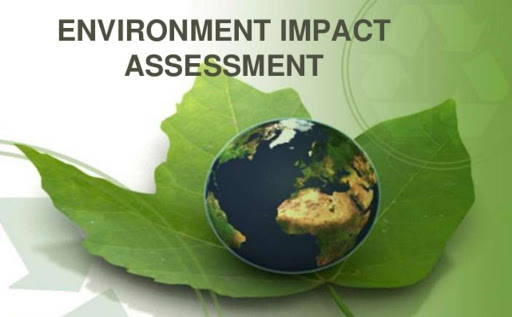The Environmental Impact Assessment is a process of evaluation regarding favorable environmental impacts proposed by several projects and development around the world. The assessment takes into consideration a series of factors that includes socio-economic effects, inter-related cultural effects, and human-health impacts that can be both beneficial or adverse.

About Environmental Impact Assessment
As mentioned above, the Environmental Impact Assessment can be defined as a process of predicting the adverse effects of a project on the environment. The assessment plays a vital role in the final decision of a project by comparing various other alternative solutions to the project’s effects on the environment and searches for the best possible ways of economic as well as environmental benefit.
The UNEP defines the Environmental Impact Assessment as a system to find environmental, economic, and social impacts of development before their acceptance. It focuses on predicting environmental impacts for a project at its earliest stages of planning and styling. It later proceeds to search for ways to reduce its adverse effects and shapes the project to suit the environmental conditions with the help of alternate solutions and predictions.
The Evolution of EIA
The Environmental Impact Assessment has been one of the most successful policies for the 20th century that focuses on environmental conservation. It involves a formal process of conduct that has been accepted and practiced in more than 100 countries around the globe. The EIA is a mandatory regulatory procedure that originated in the 1970s with the implementation of the National Environmental Policy Act or NEPA in 1969, where countries such as Australia, Canada, and New Zealand took part in its initial development. Except for these developed countries, a few developing countries had taken part in it, two of which were Columbia and the Philippines.
The Environmental Impact Assessment process became popular after the mid-1980s, around which the World Bank had adopted the policy for its major development projects. This resulted in the process of a borrower country going through an EIA process under the Bank’s supervision.
India and its History of EIA
As for the country of India, the Environmental Impact Assessment began its policy over 20 years back in the country. It started in 1976 to 1977 when the Planning Commission of the country asked for the Department Of Science And Technology to look at the River Valley Projects from an environmental perspective. The project was extended and later approved by the Public Investment Board. It is interesting to know that by 1994, all environmental clearances were given by the Central Government as an administrative decision that lacked legislative support. This was later overruled by the Union Ministry Of Environment And Forest under the Environmental Protection Act 1986, which made the Environmental Clearance Mandatory for any expansion or modernization activities of setting up new projects. Since then, the policy has seen 12 Amendments made regarding the EIA notification of 1994.
Later on, the MoEF had notified about the new legislation of EIA in the year of 2006 in September that marked various projects such as river valley projects, infrastructure, mining, thermal power plants, and small electroplating, or foundry units to get environmental clearances. But, unlike the notification of 1994, the newly set up legislation gave the responsibility of the clearing projects to the State Governments depending on their size and capacity.
This resulted in certain activities being permitted under the Coastal Regulation Zone Act of 1991, which also required a clearance. This led donor agencies such as the World Bank and the ADB to formulate a different set of rules for allowing environmental clearances to their funded projects.
How the EIA works
- Screening: The first stage of an EIA process is to determine whether the particular project proposed requires an EIA policy or not. After this, the level of assessment is proposed.
- Scoping: After the screening is done, the next stage is to identify important issues and impacts instigated by the proposed project. Scoping identifies the number of boundaries and time limits required for this study.
- Impact Analysis: Impact analysis is the stage that helps predict the environmental and social impacts of the project, which helps evaluate the overall significance of its effects on the environment.
- Mitigation: The next step in an EIA is to find alternate solutions for reducing and avoiding the potential dangers to the environment due to the proposed project.
- Reporting: Reporting is the stage that represents the overall result of an EIA based on a form or a report that will be forwarded to the decision-making authority and other parties involving the project.
- Review Of EIA: This stage involves examining all the environmental consequences, effects, impacts, and alternative solutions in the report on the proposed project to provide the required decision for the same.
- Decision-making: This is the project stage where it might get approved, rejected, or need further changes.
- Post Monitoring: The Post Monitoring Stage comes into effect once the project is finally accepted. This stage involves the assessment of the impacts of the project and ensures that there are no mistakes in limiting the legal standards and implementations of the mitigation measures as described in the EIA report.
The stages of an EIA process depends highly upon the requirements of the country or the donor, but most of the procedure follows a common structure and application to follow the basic standard of the policy.
Conclusion
By now, you might have a clear idea of how important an Environmental Impact Assessment is for developing countries and using resources for its various developmental aspects resulting in severe damage to the environment. This is why it requires an authority to conduct alternate solutions to these problems so that the future is as bright as today.

